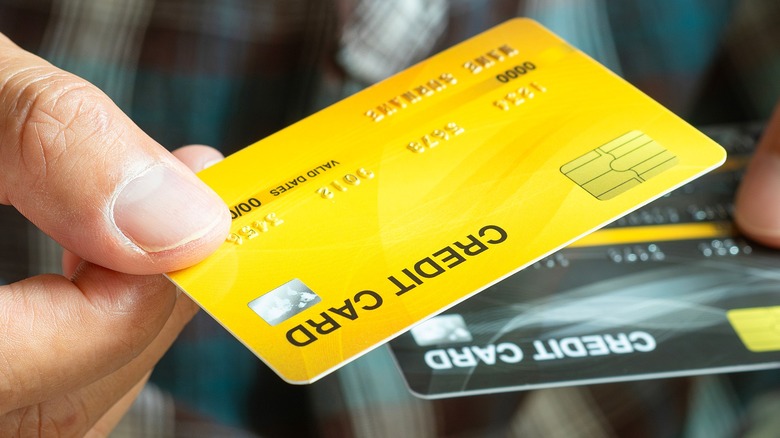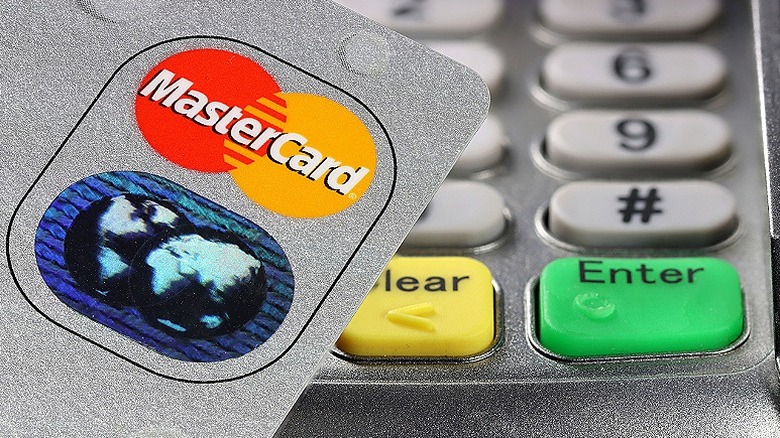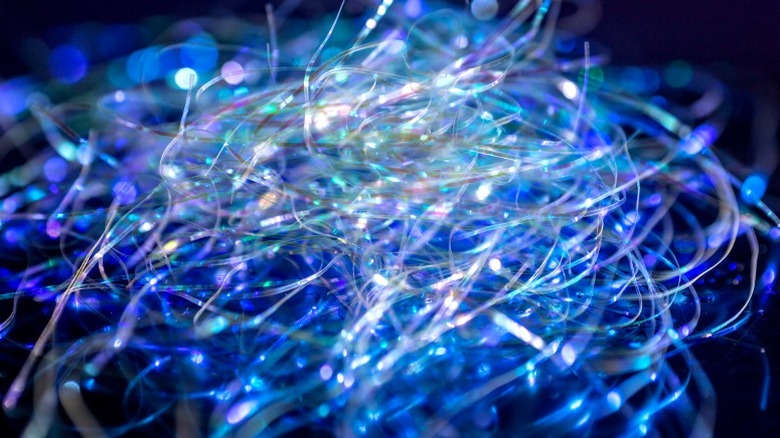Here's What The 3D 'Sticker' On Your Credit Card Actually Does
There was a time when all credit cards had more in common with 1990s grade-school notebooks than you might expect: both used to be covered in holographic "stickers." Just like any Lisa Frank holographic dolphin sticker worth its salt, these holographic credit card images also tend to be iconic. For example, Visa is known for its dove, Mastercard for its interlocked pair of globes, Discover for its sphere, and American Express for its shimmering centurion.
In fact, some credit cards still bear these small holographic images that shimmer with all the colors of a silvery gas puddle rainbow. This isn't just for style points, of course, but because the 3D holograms are really one of your credit card's security measures. When tilted this way or that, the image appears to move or reveal some new element. It's a microscopic bit of highly scientific magic, intended to keep credit card companies safe from fraud, and anyone running credit cards at a point of sale safe from them, as well.
How credit card holograms work
Like how some Halloween decorations look like a portrait of a young man from one angle but a spooky skeleton from another (speaking of, check out how much Americans spend on Halloween), the holographic images printed on credit cards feature a dimensional lenticular effect, meaning the image shifts and takes on depth, depending on the angle of the viewer.
These aren't "true" holograms, but the optical illusion they create using carvings and recorded waveforms (later reconstructed by the eye as multidimensional images) mean security holograms like the ones on credit cards and passports aren't your average notebook sticker. There's some serious science behind this effect, which is why they've been used as an anti-counterfeiting tactic since their adoption by major credit card companies in the 1980s.
Just like you find ways to protect yourself from sneaky credit card scams, credit card companies try to stave off losing millions to counterfeit card fraud. The small silvery images on credit cards are intended to be difficult to forge; the design of these images is supposed to be so complex that counterfeits should be immediately obvious. "Fake" holographic images lack much of the vibrancy and depth of authentic security holograms. Good fakes are far more expensive to produce than poor fakes, so the idea behind the measure is that tellers and shop clerks will check the holographic image at points of sale or withdrawal, and know right away if the card is a fraud.
The past and future of security holograms
Holograms visible to the naked eye (or "Benton's holograms") instead of only with the help of laser lighting were made possible by Stephen A. Benton. The MIT professor invented the holograms used on credit cards (and more) when he created white-light transmission holography while working at Polaroid in 1968.
While mass production (and reproduction) of Benton's holograms proliferated in the 1980s, new anti-counterfeiting technology is always being imagined and refined. The chip in your credit card can also combat fraud, for example, in a slightly more technological, tokenized way than the more analog hologram. But even that chip may be considered outdated authentication in the days of mobile wallets and tap-to-pay contactless payments.
Security is ever-elusive for both cardholders and credit card companies. As online fraud becomes more dominant than forgery of physical credit cards, card companies are looking to increasingly digital security solutions. Case in point, Visa started putting its dove hologram on cards in 1984; in 2024, Visa issued a press release announcing its adoption of digital passkeys, AI-based security measures, and private data tokens for merchants. Whether these tactics are as effective as security holographic images of yesteryear remains to be seen — but they certainly won't look as cool as a "flying" silver rainbow dove.


